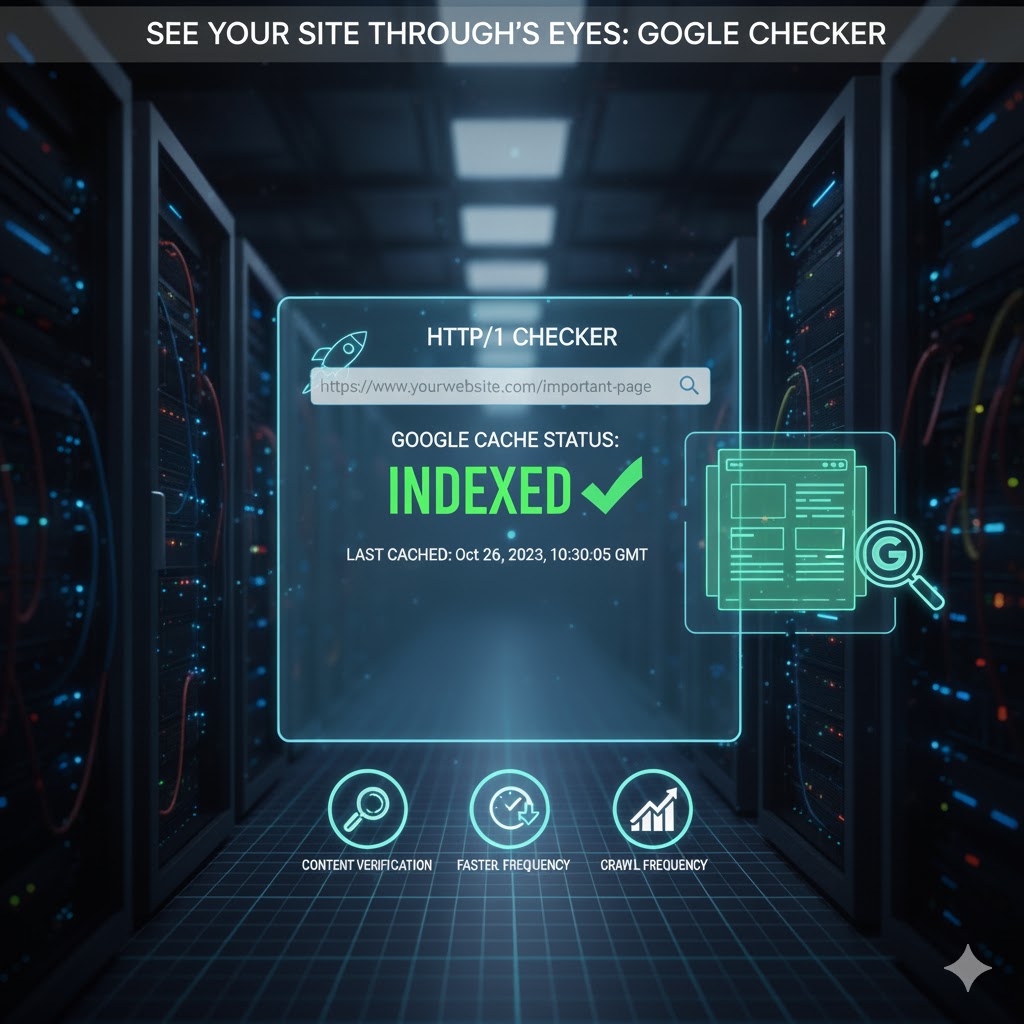
Google cache checker
Created on 9 October, 2025 • Checker Tools • 35 views • 3 minutes read
What is a Google Cache Checker? A Google Cache Checker is an online tool that allows you to quickly determine if a specific webpage is indexed by Google and, if so, view the version of that page Google's crawler last saved in its cache. Function: It f
See Your Site Through Google's Eyes: The Power of a Google Cache CheckerThe Web's Time Capsule: What is Google Cache?
Every time Google's mighty web crawlers (known as Googlebot) visit a webpage, they don't just read the content—they also take a snapshot of it and store it on Google's servers. This stored version is called the Google Cache. It's essentially Google's backup copy of a webpage.
For the average internet user, the cache might seem like a neat trick to access a site that's temporarily down. But for anyone involved in managing a website, a Google Cache Checker is an indispensable tool that offers crucial insights into how Google perceives and indexes your content.
Why Check the Cache? More Than Just a Backup!
A Google Cache Checker allows you to retrieve this cached version directly. This seemingly simple action unlocks a wealth of information for webmasters, SEOs, and content marketers:
Is My Page Indexed? (The First Check): If a page doesn't appear in the Google Cache, it might not be indexed at all. This is the absolute first step to troubleshooting why a page isn't ranking.
What Does Google Really See? (Content Verification): Your live page might look perfect, but what does Googlebot actually render and read? The cached version shows you the raw HTML and content that Google processed. This is vital for:
Debugging: Identifying if important content, links, or images are missing from Google's view due to rendering issues or JavaScript problems.
Keyword Placement: Confirming that your target keywords are present and properly positioned in the content Google sees.
"Hidden" Content: Ensuring that no unintended content (like old debugging text) is accidentally being cached.
How Fresh is My Content to Google? (Crawl Frequency Insight): The date and time displayed on the cached page tell you precisely when Googlebot last visited that specific URL.
Frequent Updates: For important, frequently updated pages, you want Google to re-crawl often. A stale cache date might indicate a crawling issue.
New Pages: For new content, seeing a recent cache date confirms that Google has discovered and processed your fresh content.
Diagnosing Penalty Recovery (Post-Penalty Check): If your site has suffered a penalty, the cache can help you monitor if Google is re-indexing your cleaned-up content.
Competitor Analysis (A Peek into Their Past): While primarily used for your own site, a quick cache check on a competitor's page can sometimes reveal changes they've made, or what their page looked like at a specific point in time.
Accessing Down Sites (User Convenience): If a site is temporarily offline, accessing its cached version can often provide the information you need.
How to Use a Google Cache Checker (or Do It Manually)
Many online tools simply automate the process, but you can also check Google Cache manually:
Through Google Search: Search for the webpage. In the search results, click the small downward-pointing arrow next to the URL (or the three dots/kebab menu) and select "Cached."
Directly in Your Browser: Type cache:yourwebsite.com/your-page-url into the Google search bar. (Note: This method might not work reliably in all regions or browsers anymore, so using a dedicated checker or the search result method is often better).
Your Website's Mirror in the Cloud
A Google Cache Checker isn't just a technical gimmick; it's a vital diagnostic tool that offers a unique perspective: how the world's largest search engine actually perceives your website. By regularly checking your important pages, you can ensure your content is indexed correctly, crawled efficiently, and ultimately, visible to your audience. Don't leave your site's visibility to chance—look at it through Google's eyes!
Popular posts
-
DNS LookupChecker Tools • 91 views
-
Gravatar checkerChecker Tools • 63 views
-
SSL LookupChecker Tools • 51 views
-
Website hosting checkerChecker Tools • 50 views
-
Whois LookupChecker Tools • 48 views